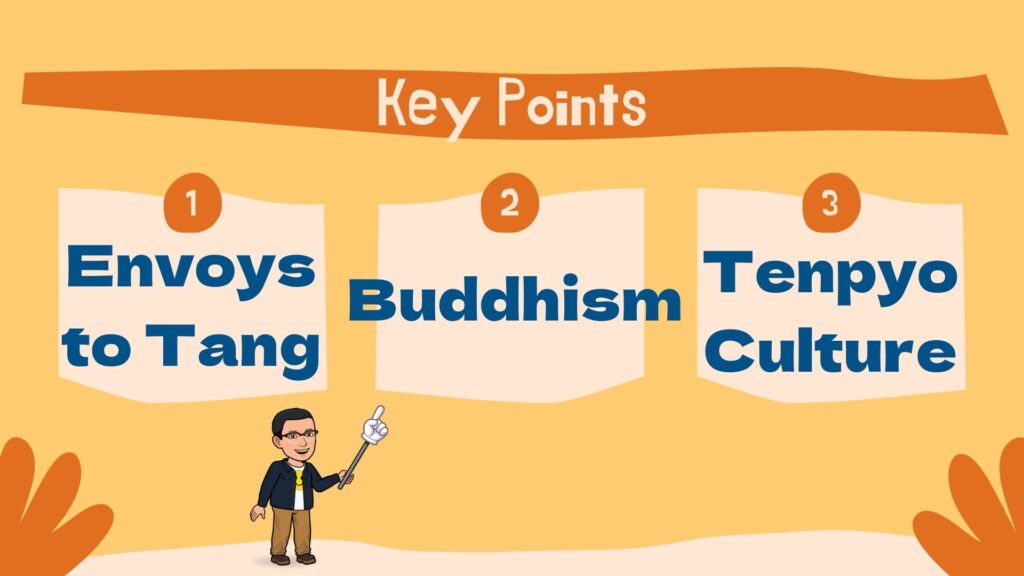Click here to go to the YouTube video

Japanese envoys to the Tang Dynasty were frequently sent to China to introduce advanced systems and culture to Japan. It was during this period that the famous Buddhist monk, Jianzehn, or Ganjin, came to Japan with great difficulty and introduced the precepts of Buddhism.

The Nara period was a time of epidemics, earthquakes, and famine. Consequently, the smallpox epidemic that started in 735 was thought to have killed about 30% of the population.

Emperor Shomu decided to protect the country with the power of Buddhism, and he built Kokubunji temples across the country and the huge Todaiji Temple in the capital, Heijokyo. A 15-meter high gilt-bronze Great Buddha was constructed at Todaiji. Five hundred tons of copper were used in the construction of the Great Buddha, and more than two million people were involved.

The Shosoin, the storehouse of Todaiji Temple, contains items brought from Tang Dynasty China via the Silk Road, as well as the favorite items of Emperor Shomu, which have been handed down to the present day. The cosmopolitan culture of this period, which flourished mainly among the aristocracy under the influence of the Tang Dynasty, is called Tenpyo culture.

I would like to introduce a few of my favorite sculptures, the first is the statue of Ashura in Kofukuji Temple, 153 cm tall with an impressive boyish face. The second is the statue of Komoku-ten, one of the Four Heavenly Kings in the Kaidan-in of Todaiji Temple. What a scary face! The third is the statue of Jianzehn at Toshodaiji Temple. He lost his sight on the voyage to Japan, but he has a very peaceful expression.

In the Nara period, the “Kojiki” (Records of Ancient Matters) and “Nihonshoki” (Chronicles of Japan) were compiled to convey the myths and history of Japan in written form. Local records were compiled in the “Fudoki”. The “Man’yoshu”, a collection of 4,500 Japanese poems by poets, emperors, aristocrats, soldiers, and farmers, conveyed the spirit of the Japanese people at that time.

Key Points.
First, Japan actively dispatched envoys to the Tang Dynasty to introduce advanced culture.
Second, as the crisis spread, Emperor Shomu tried to use the power of Buddhism to protect the country.
Third, we call the international Buddhist culture that developed during this period the Tenpyo culture.
Thank you for reading!




Comment